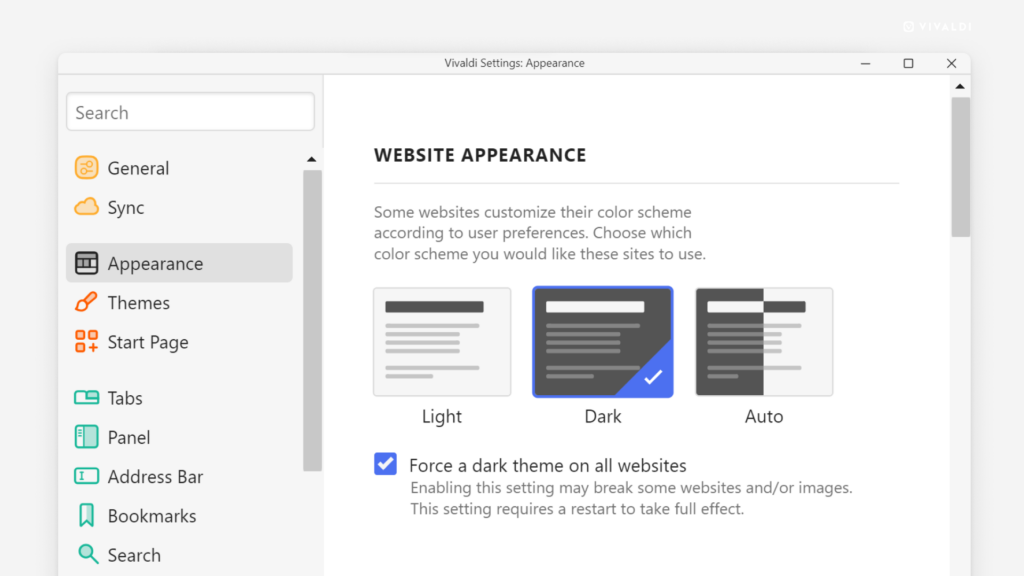Desktop Tips
Tip #458
April 1, 2024
Drag one Speed Dial bookmark over another to create a new folder.
If you’ve accumulated too many bookmarks on your Speed Dial and want to group them into folders, all you need to do is drag one of the bookmarks, and when the background of the bottom bookmark changes color release the mouse button.
Once the new folder has been created, right-click on the folder to rename it and, if you wish, add a custom thumbnail (see Tip #69).
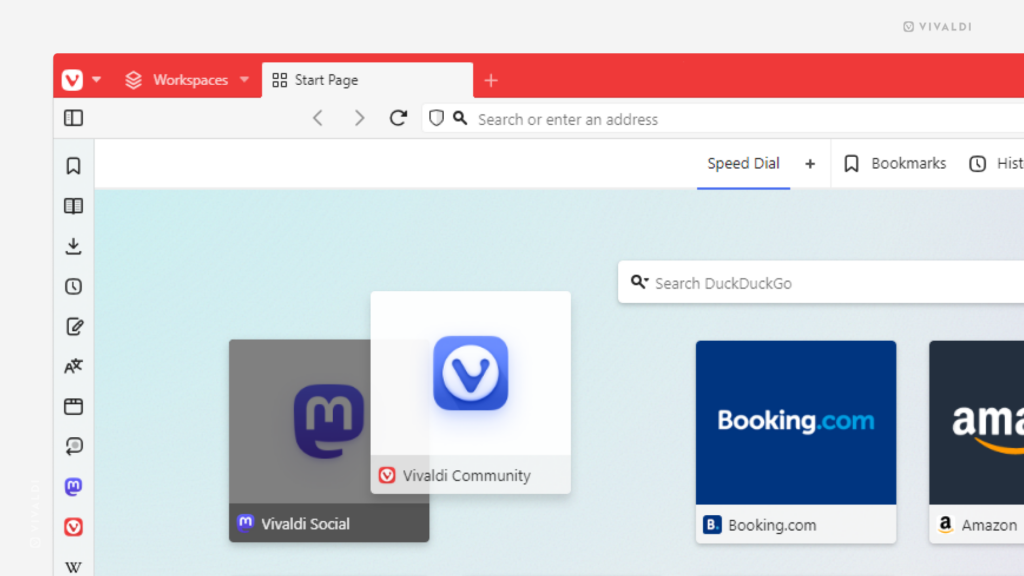
Tip #457
March 28, 2024
Select the Bookmarks folder you want to display on the Bookmark Bar.
There are many ways you can access and manage your bookmarks in Vivaldi. Bookmark Bar is probably one of the more classic options. See below to find out how you can choose which folder of bookmarks and bookmark sub-folders will be displayed there.
To select a Bookmark Bar folder:
Option 1
- Go to Settings > Bookmarks > Bookmark Bar Folder.
- Select your preferred folder from the drop-down menu.
Option 2
- Open the Bookmark Panel or Bookmark Manager.
- Select the folder the contents of which you want to display on the Bookmark Bar.
- In the folder information section, tick the box for “Bookmark Bar”.
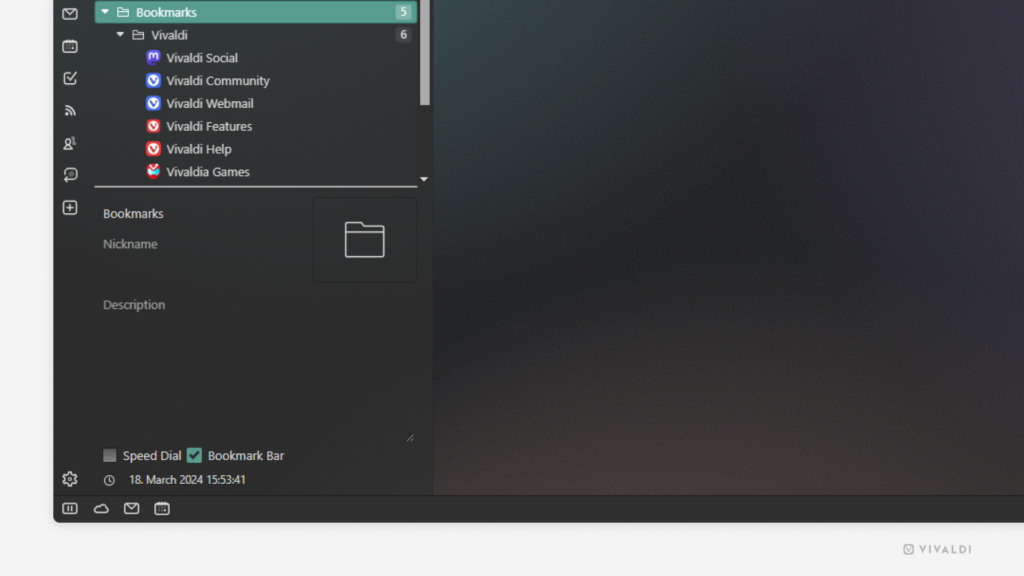
Tip #456
March 27, 2024
Get confirmations for successfully sent messages in Vivaldi Mail.
Whether you’re on an unreliable network or just want to confirm that your message was sent, seeing a notification at the corner of the screen will put your mind at ease.
To enable sent mail notifications:
- Go to Settings > Mail > Mail Settings > Mail Notifications.
- Enable “Notify on Successfully Sent”
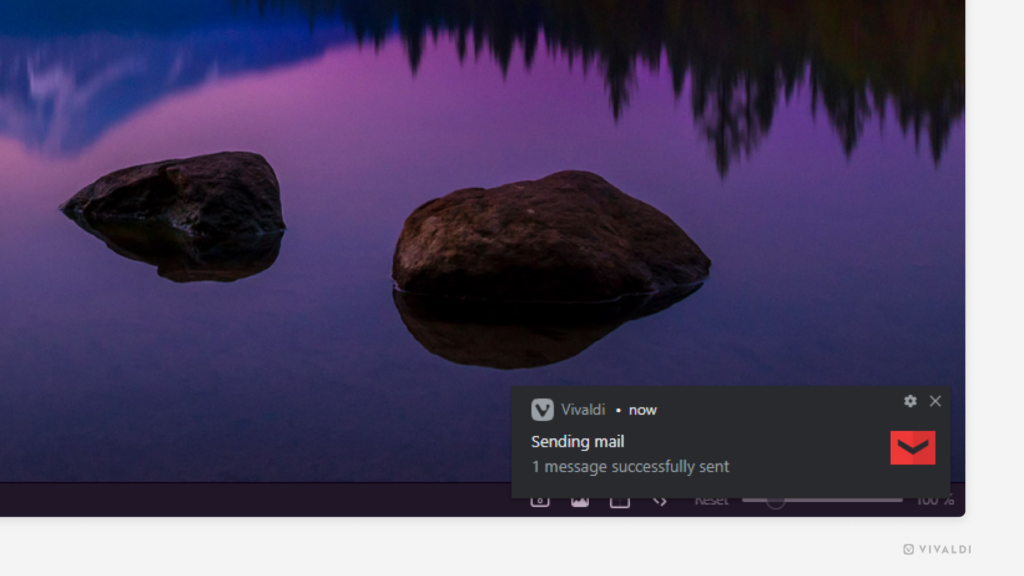
Tip #454
March 25, 2024
Give Saved Sessions unique and easily recognizable names.
Saving tabs as a Session is a great way to save a selection of tabs for easy access at a later date. While you don’t need them, you can close the tabs to declutter your browser and free up some resources.
To rename a Session:
- Open the Sessions Panel.
- Right-click on the session you want to rename and select “Rename” from the context menu.
- Type in the new name and press Enter.
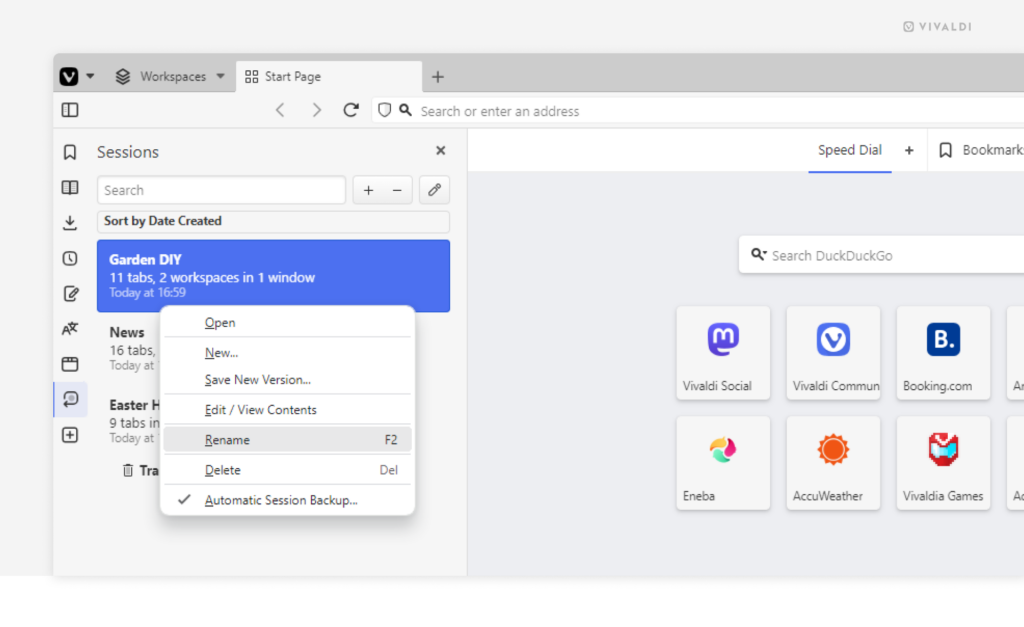
Tip #452
March 21, 2024
Display Vivaldi browser’s user interface in your preferred language.
Prefer to have apps in your mother tongue or want to learn new vocabulary in a different language? Then it’s time to explore the language settings in Vivaldi.
To change the user interface language:
- Go to Settings > General > Language > User Interface Language.
- Select your preferred language from the drop-down menu.
- Click “Save Language” and confirm the decision.
- Restart the browser.
If you don’t see the language of your choice as an option, but you’re well-versed in both English and that language, reach out to us and help us translate the browser.
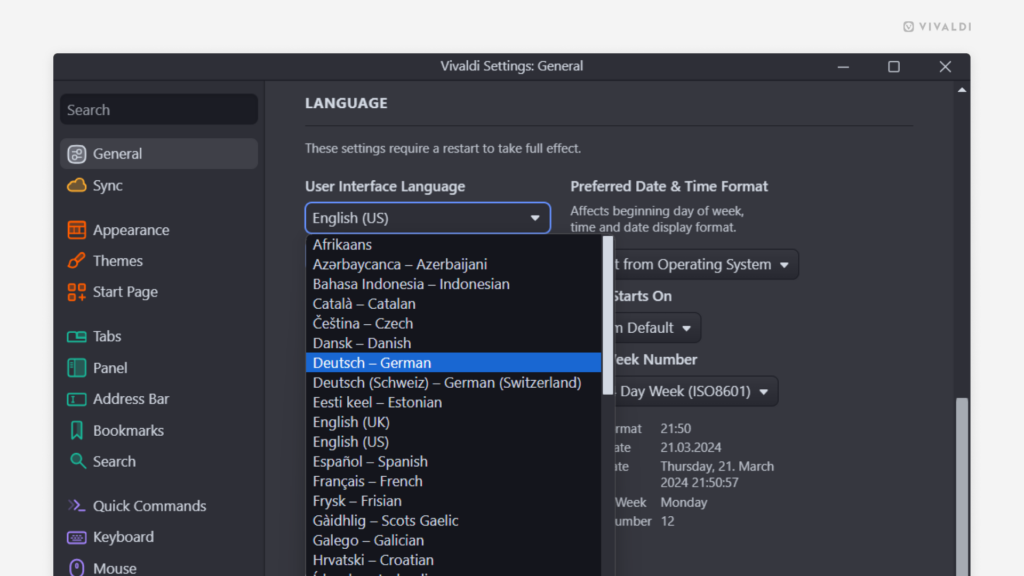
Tip #450
March 19, 2024
Review and update global and per-site Website Permissions in Privacy and Security Settings.
One website wants access to your location, another wants to send you notifications, a third wants access to your camera and microphone, and so on. It’s not easy to remember to which websites you’ve given which permissions. Luckily, you’ll find all websites and their permissions listed neatly in Vivaldi’s Settings.
To review and update Website Permissions:
- Go to Settings > Privacy and Security > Website Permissions.
- Select either Global Permissions to review the defaults or a specific website on the list.
- Use the drop-down menu next to each permission type to update it.
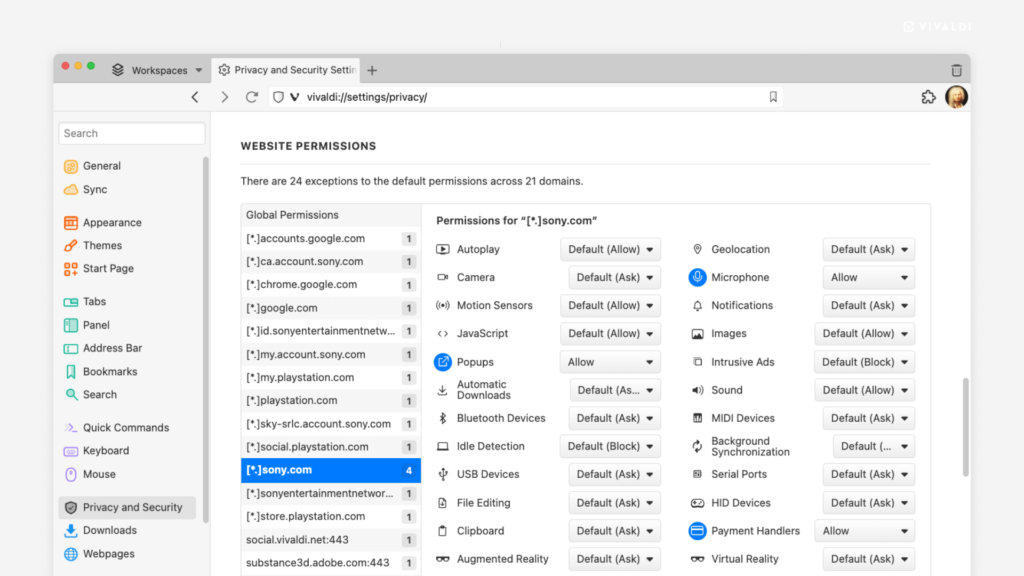
Tip #449
March 18, 2024
Set Vivaldi’s internal pages as the Homepage or New Tab Page.
Start Page with your Speed Dials isn’t the only option for your Homepage and New Tab Page. You can also set pages of your choice to open when you go to your homepage or open a new tab. It’s common to set a website as one of these pages, but you could also open Bookmarks, Notes, Calendar, and more.
To set an internal page as the Homepage/New Tab Page:
- Go to Settings > General > Homepage or Settings > Tabs > New Tab Page.
- Select “Specific Page”.
- Enter the internal page’s link. For example
vivaldi://bookmarks,vivaldi://notes,vivaldi://calendar.
Tip #445
March 12, 2024
Click on the link icon on the Calendar event to open the web page.
When you have enabled Event Property Icons in Settings > Calendar > Calendar Display, you’ll see little icons next to the event title showing what kind of information the event includes.
If you’ve added a web link to the event, you can just click the icon to open it, instead of opening the event to view and open the URL. That’s especially useful when you’ve chosen the Minimal View in Vivaldi Calendar, where only the time and event title are displayed.
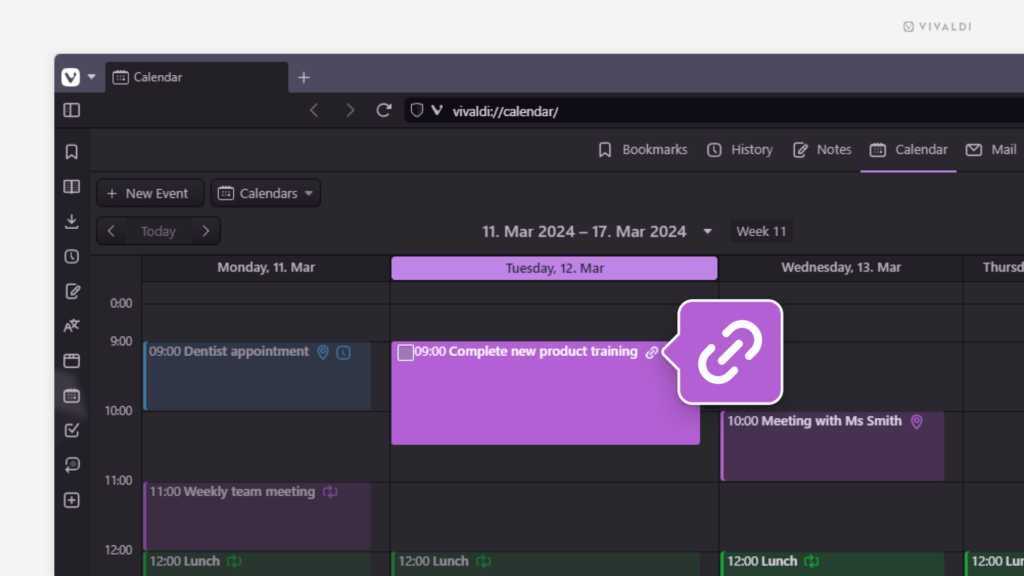
Tip #444
March 11, 2024
Remove individual History entries from the Address Field.
When you type a link or a search term in the Address Field, you’ll see suggestions from Bookmarks, (Typed) History, Synced Tabs, and more in the Address Field drop-down menu and as the auto-completed suggestion. If some (Typed) History suggestions are no longer relevant, you can remove them.
To delete suggestions from History:
- Type something that would bring up the (Typed) History suggestion you want to remove.
- Find the entry in the Address Field drop-down menu.
- Click on the X that appears on the right side when you hover over the suggestion.
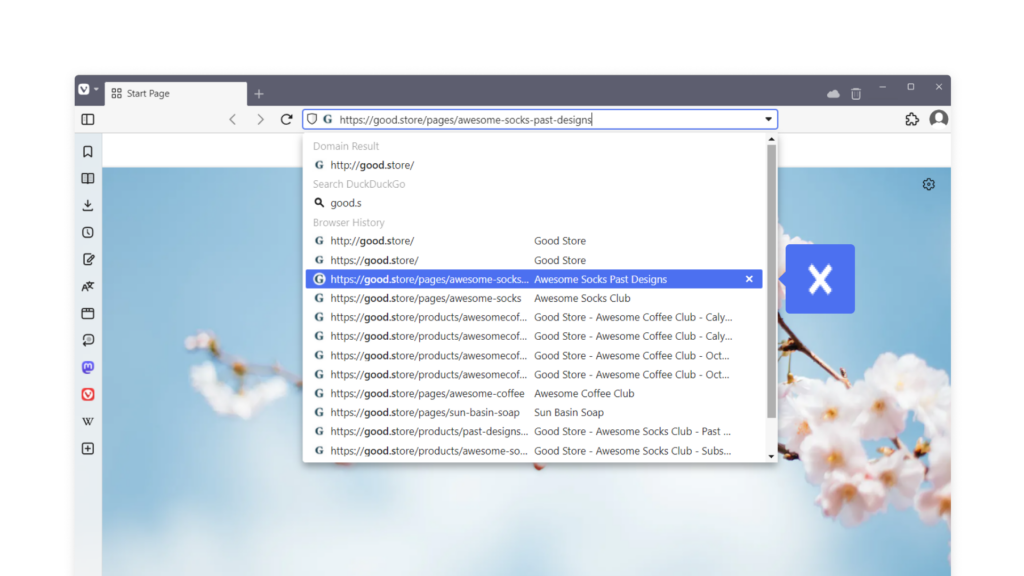
Tip #442
March 7, 2024
Enable automatic updates to always use the latest version of Vivaldi.
To make use of brand new and improved features, fixed bugs, and important security updates, make sure to keep your Vivaldi up to date. The easiest way to achieve this is by enabling automatic downloading and installing of updates. That way, the update is downloaded in the background and all you need to do is restart the browser when it’s most convenient for you for the update to be applied.
To enable automatic updates:
- Go to Settings > General > Updates.
- Click on “Show Update Settings”.
- Enable “Automatically Download and Install Updates”.
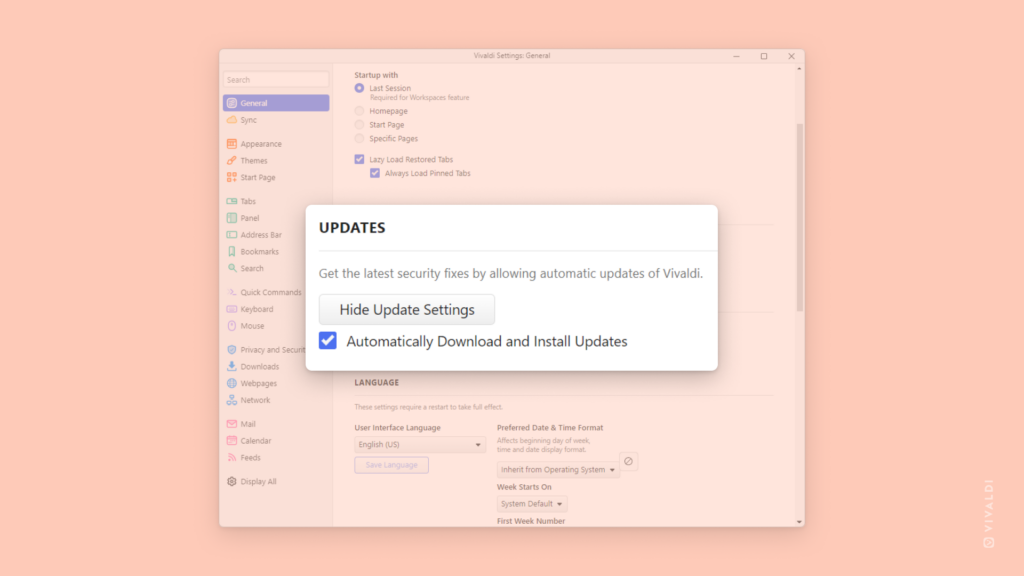
Tip #441
March 6, 2024
Back up your Reading List locally by exporting it to a file.
You can export your Reading List as a CSV file from Vivaldi to back up, transfer, or share the articles and pages you’ve saved. The file includes the page link, title, read status, and last interaction time of each saved page.
To export your Reading List:
- Go to the
 Vivaldi menu > File > Export > Export Reading List.
Vivaldi menu > File > Export > Export Reading List. - Choose the destination folder.
- Click “Save”.
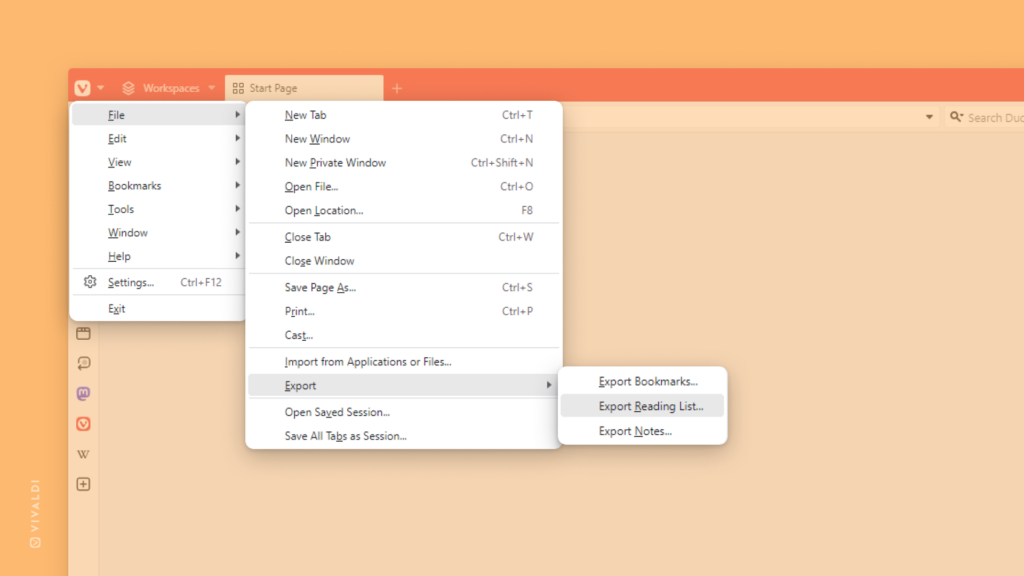
Tip #437
February 29, 2024
Force dark mode on websites that don’t provide a dark theme themselves.
Dark themes have been in for a while, but websites are still catching up with the trend. If you don’t want to wait, you can use Vivaldi’s settings to display even those sites in darker colors.
To enable dark mode:
- Go to Settings > Appearance > Website Appearance.
- Select “Dark”.
- Tick the box for “Force dark theme on all websites”.
